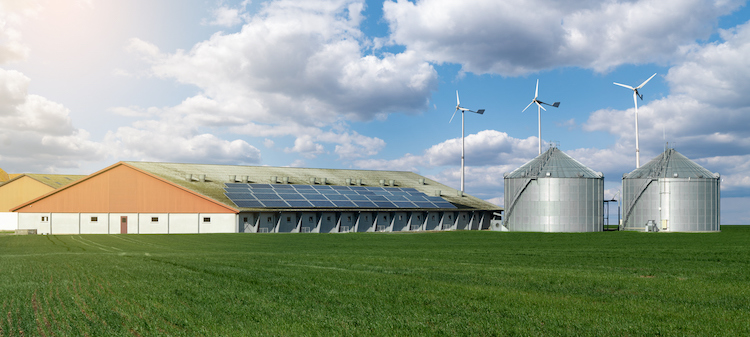
Talking about sustainable advancements in agriculture can feel like trying to hit a moving target, especially with so many entities involved along the supply chain from farmers to consumers. To make real change that works for everyone, those organizations must be able to work together effectively and respectfully.
That was the takeaway that attendees of the Animal Agriculture Alliance Summit heard in a panel discussion of a dairy farmer, a dairy processor, and a retailer who have come together to work toward the sustainability goals each of them has set.
“There is change coming out there, and we need to be ready to harness that opportunity,” said Matt Fry, who dairy farms on Maryland’s Eastern Shore. His family’s farm joined the pilot sustainability program offered by Danone, who they sell their milk to, because they saw it as a good way to get involved in the space.
Choosing the right partner for their sustainability journey was critical because their time was already directed toward running the farm. Fry recommended that farms work with a company that is responsive, persistent, and clear about what information they need.
The reports the farm receives back about their environmental journey are not so much of a deciding factor in the day-to-day operations, Fry said, but rather, they provide a larger picture so the family can guide the ship in the direction they want. The data has strengthened partnerships with their landowners, regional groups, and even when talking with legislators. He described the biggest hurdle as simply getting started, but once you are comfortable with your system, it is a tool that can help you be the producer your milk buyer doesn’t want to be without.
A key of Danone’s program is that Fry had the choice to join. “It’s a voluntary program that won’t work for every partner, but it’s useful for those who are interested,” shared Katherine Staiger, who manages the program. “They don’t feel like it’s a mandate; it’s an opportunity.”
Farmer buy-in is very important for the program to be successful, she continued. That occurs when the milk buyer is a partner and not a parent. They must recognize that there is no silver bullet for regenerative “success” on a dairy and trust that the farmers know what will work on their land. Staiger explained that has helped their program grow from 12 dairies and 26,000 acres when they began in 2017 to now encompassing more than 100,000 acres.
Once milk leaves the farm, milk buyers must then work with their customers to meet sustainability goals that are often the most consumer-facing of the supply chain. For Danone, one of those customers is Starbucks. “We may be a coffee company, but we are really a dairy company as well,” said Angela Anderson, the organization’s director of sustainable dairy.
Anderson described that they quickly realized when developing their sustainability goals that their future was going to be tied to the farmers producing their commodities. Dairy was near the top of that list as she explained it represented 22% of their carbon footprint and 5% of their water use.
They can accelerate change in the industry when they invest in the industry, Anderson explained. Starbucks is currently looking at the footprint of their fluid milk, but in the future, they plan to evaluate the butter and cheese they use, too. While they’ve been talking about sustainability for years, that conversation hadn’t always made it to the sales level. That is now changing because of consumers, and it means every part of the supply chain has a place in making improvements.
“Dairy absolutely has the opportunity to be a solution, not problem for us,” Anderson said. “If a farm is doing great sustainable work, we need to listen.”








